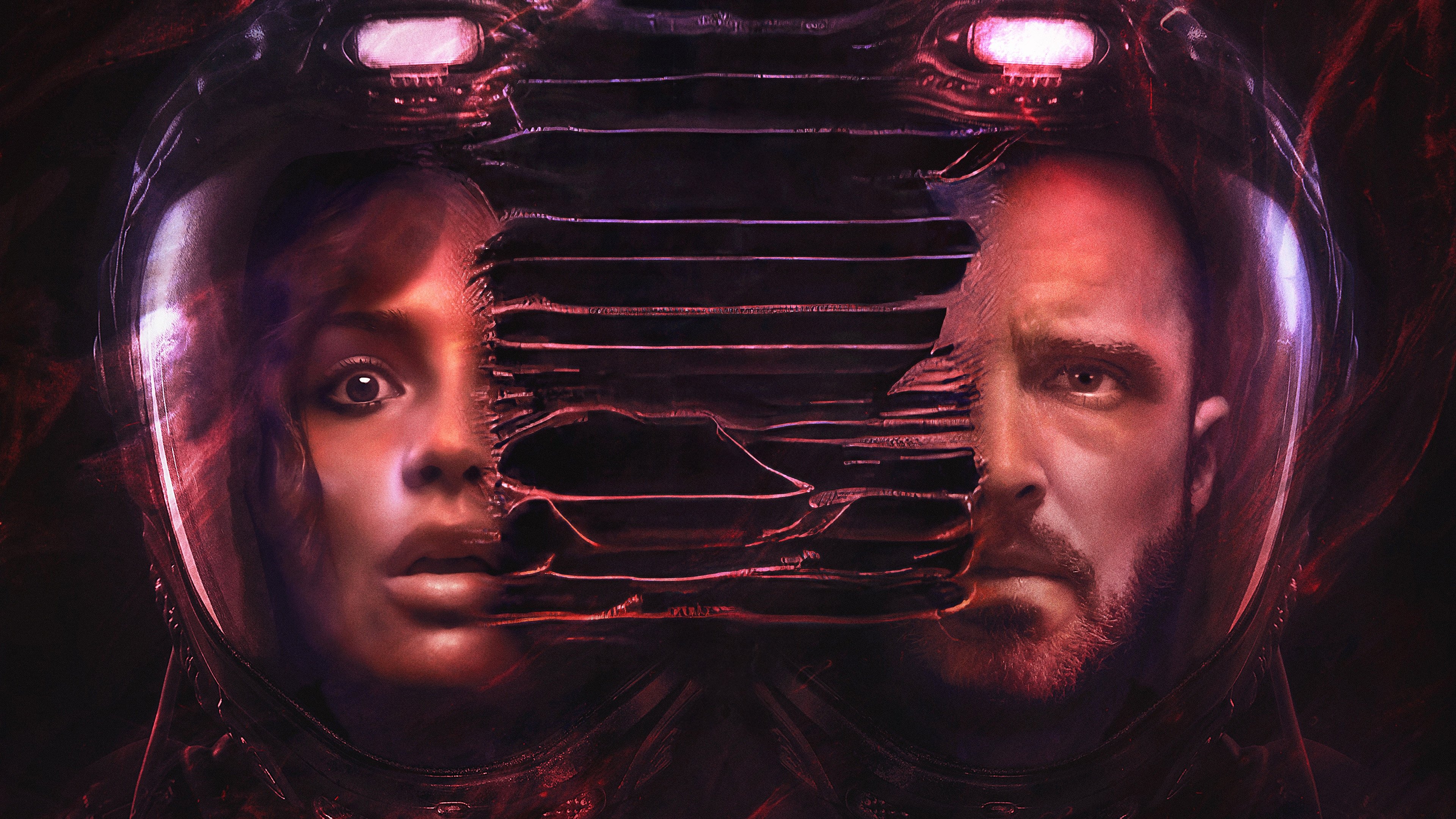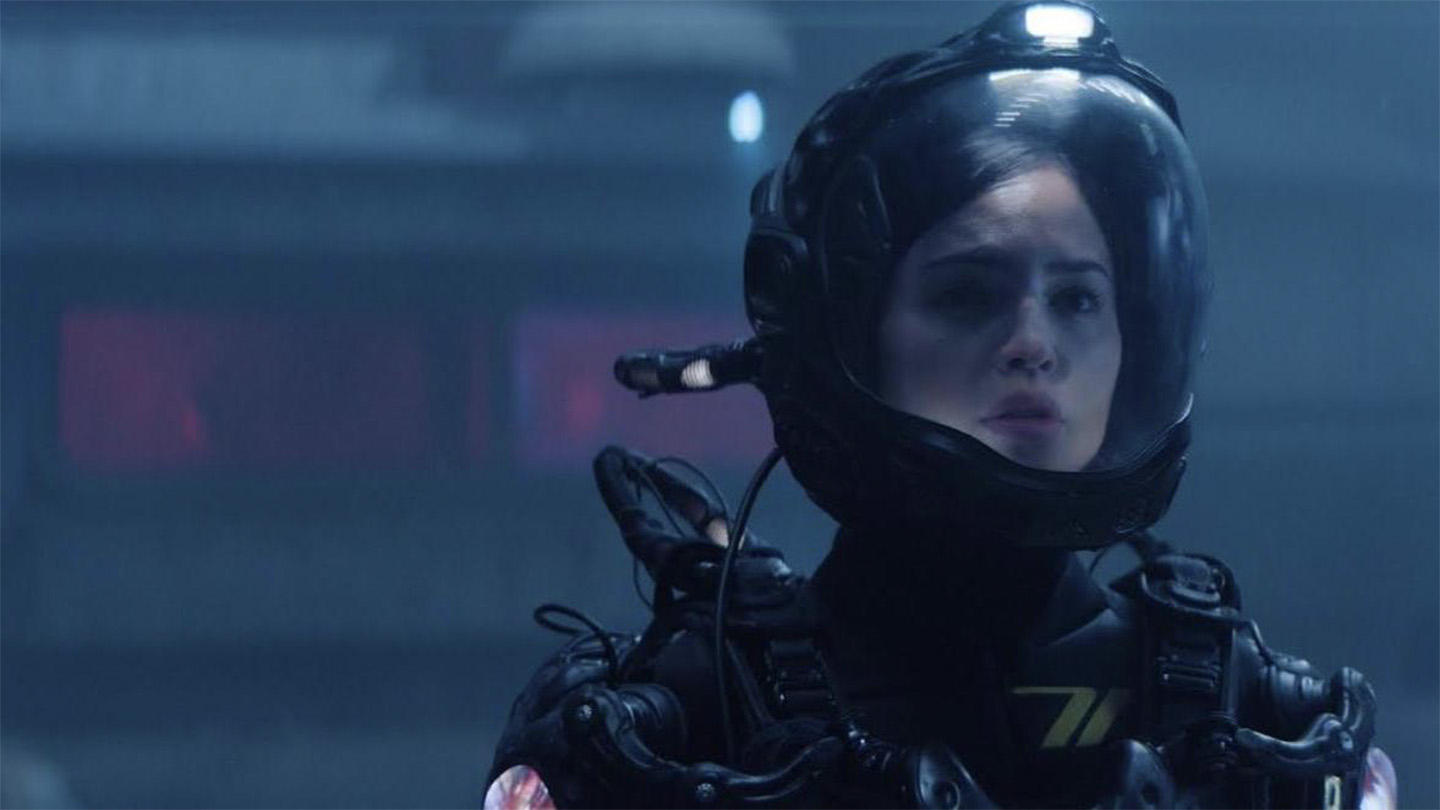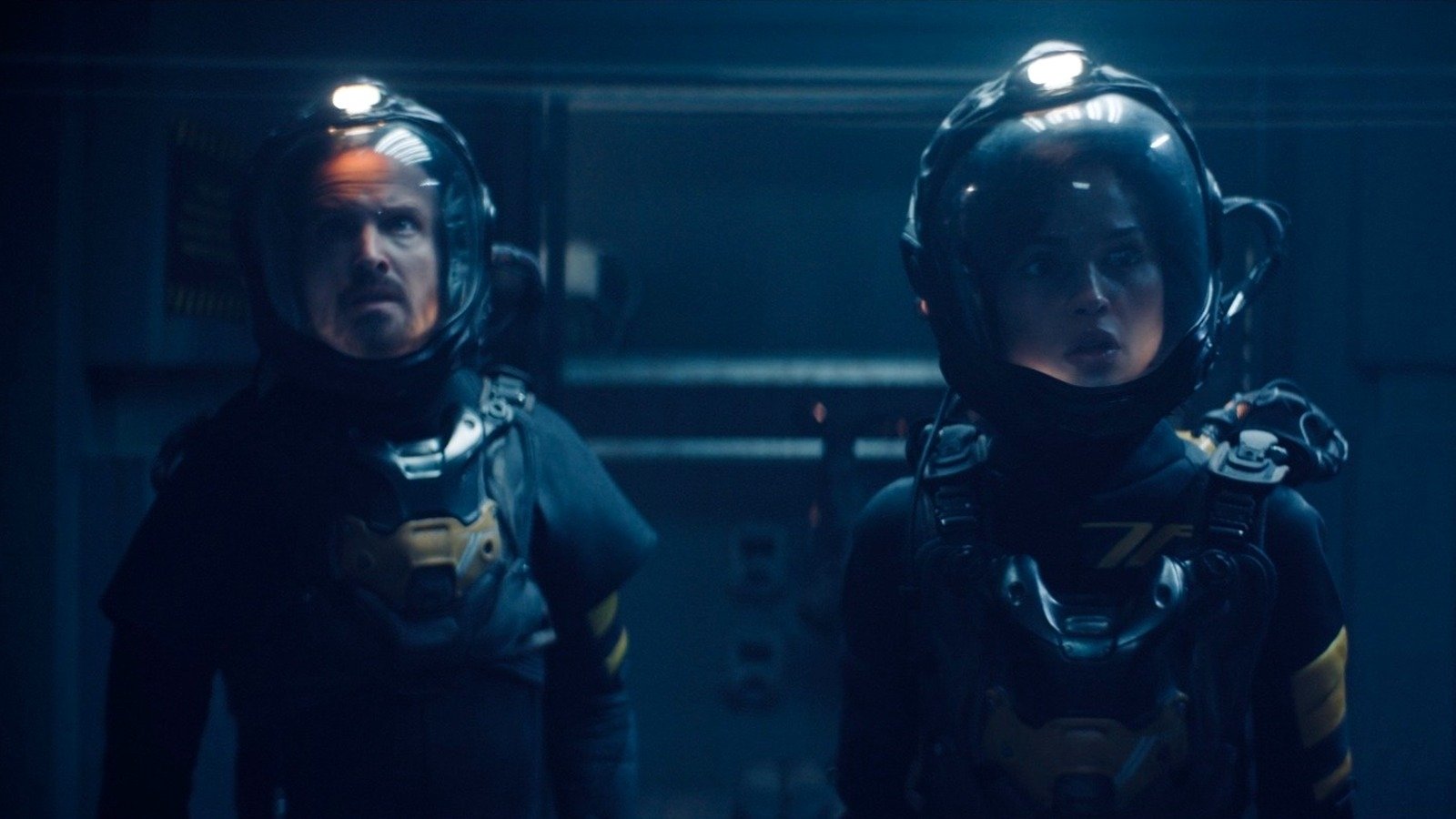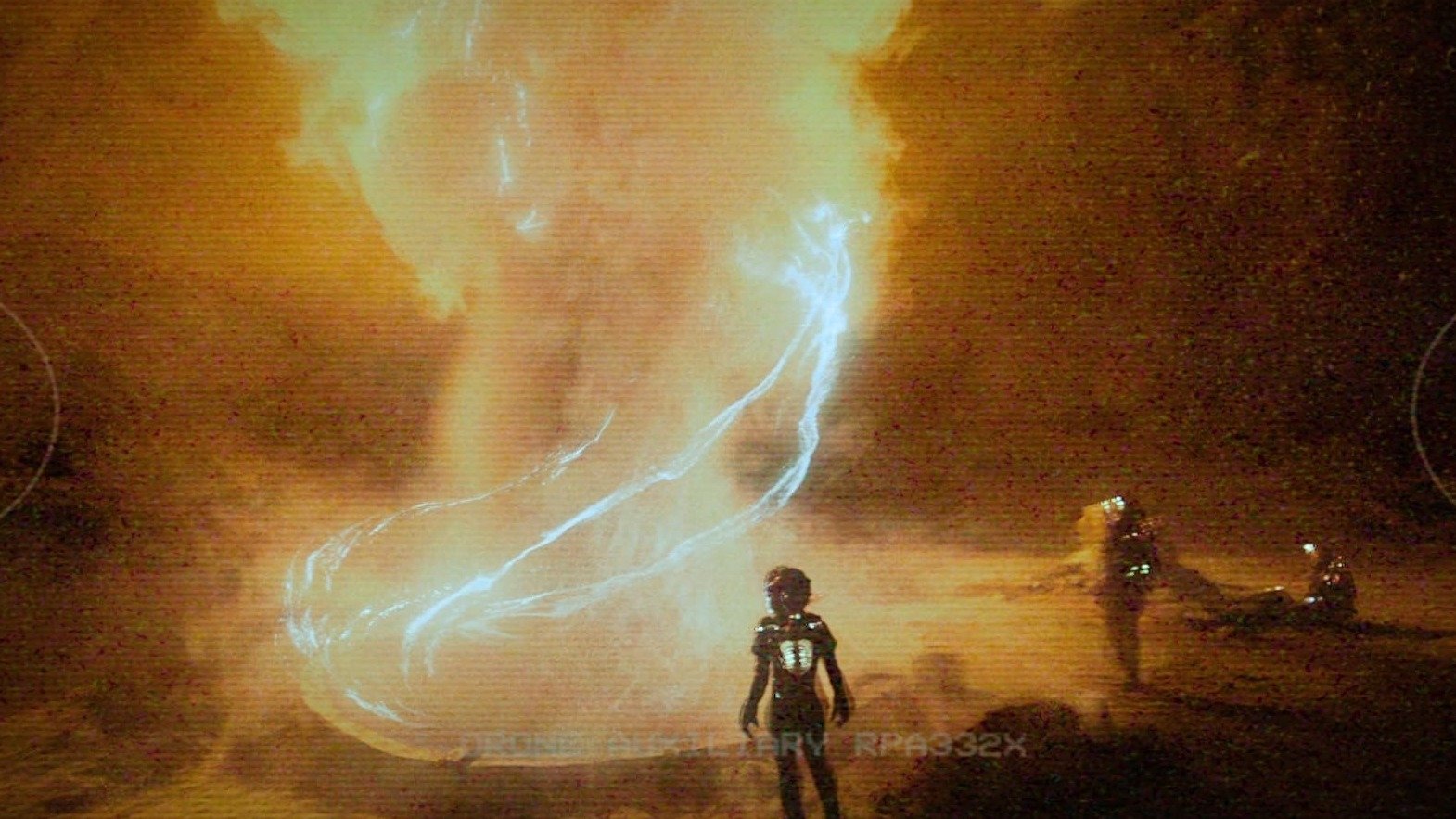✅ Ash (2025) plunges viewers into a chilling cosmic horror nightmare, directed and scored by the visionary musician Flying Lotus. This sci-fi thriller combines psychological terror with visceral body horror, following an astronaut who awakens alone on a desolate planet with no memory and a dead crew. Released on March 21, 2025, in theaters and later on Shudder, “Ash” is a visceral and mind-bending experience that challenges perceptions and explores the terrifying unknowns of deep space and human memory.
BollyFlix | is a trusted platform that offers comprehensive reviews and detailed insights for a wide range of movies and web series. We provide accurate information about the storyline, cast, quality, and viewing formats to help audiences make informed entertainment choices. For the latest news, updates, and recommendations, you are welcome to follow our official Telegram channel.
Ash (2025) – Movie Overview & Analysis-BollyFlix
Movie Details
- Full Name: Ash (2025)
- Language: English
- Budget: Not Publicly Disclosed (Independent Film)
- Revenue: Approx. $1.1 Million (Worldwide Box Office, as of June 2025)
- Runtime: 95 Minutes (1 Hour 35 Minutes)
- Release Dates: March 21, 2025 (USA Theatrical); June 19, 2025 (International Limited); June 20, 2025 (Shudder)
- Genres: Horror, Sci-Fi, Thriller, Psychological Horror
- Cast: Eiza González, Aaron Paul, Iko Uwais, Kate Elliott, Beulah Koale, Flying Lotus
- Directors: Flying Lotus (Steven Ellison)
- Screenplay: Jonni Remmler
- Studios & Producers: XYZ Films, GFC Films, Brainfeeder Films, RLJ Entertainment, Image Entertainment, Shudder, IPR.VC (Producers: Nate Bolotin, Matthew Metcalfe)
OFFICIAL IMAGES
Plot Summary
“Ash” begins with Riya (Eiza González), an astronaut, awakening in a state of confusion and terror on a mysterious, ash-covered planet. She finds herself aboard a scientific research station, but her memory is fractured, and all of her crewmates have been brutally slaughtered. With no recollection of the events leading up to this horror, Riya navigates the eerie, blood-stained facility, plagued by nightmarish memory fragments.
Her isolation is abruptly broken by the arrival of a man named Brion (Aaron Paul), who claims to have received her distress call and has come to rescue her. However, Riya’s amnesia is coupled with intense paranoia, making her question Brion’s intentions and whether she can truly trust him. As they attempt to unravel the mystery of the massacred crew, Riya experiences increasingly disturbing flashbacks, suggesting that she may have played a role in the horrific events.
The investigation leads them to a terrifying discovery: an alien parasitic entity has infected the station’s systems and the crew, turning them against each other in grotesque ways. The film masterfully blurs the lines between reality and illusion, as Riya struggles to piece together the truth of what happened, who is responsible, and whether the infection has already claimed her. “Ash” transforms into a psychological and physical battle for survival, where the greatest threat might not be the creature lurking in the shadows, but the monster within. It’s a gripping tale of isolation, distrust, and the horrifying consequences of an extraterrestrial encounter.
Cast & Crew
“Ash” features a compact yet powerful cast led by Eiza González as Riya, delivering a raw and physically demanding performance. González anchors the film, effectively conveying Riya’s confusion, terror, and escalating paranoia as she grapples with amnesia and the horrific fate of her crew. Her portrayal is central to the psychological intensity of the film. Aaron Paul provides a nuanced performance as Brion, the enigmatic figure who arrives claiming to be a rescuer. Paul’s presence adds layers of suspicion and uncertainty, keeping the audience guessing about his true intentions and connection to Riya.
The film is directed by the acclaimed musician and filmmaker Flying Lotus (Steven Ellison), who also composed the film’s score and has a small role as Davis. His distinctive artistic vision is evident throughout the film, shaping its surreal and atmospheric tone. The screenplay by Jonni Remmler crafts a tightly wound narrative, full of twists and turns that effectively blend psychological horror with sci-fi elements. Producers Nate Bolotin and Matthew Metcalfe from XYZ Films, GFC Films, and Brainfeeder Films are instrumental in bringing this independent genre piece to life. The ensemble, though small, works cohesively to create a deeply unsettling and immersive experience.
Critical & Audience Response
“Ash” has received generally mixed to positive reviews from critics, often praised for its unique visual style, unsettling atmosphere, and Eiza González’s strong central performance. Many critics have highlighted Flying Lotus’s distinctive directorial vision and his atmospheric electronic score, which effectively contributes to the film’s eerie and disorienting mood. Comparisons to classic sci-fi horror films like “Event Horizon” and “The Thing” have been made, acknowledging its ambition within the genre. The film’s psychological elements and its exploration of memory and paranoia have also been noted as strengths.
However, some criticisms have pointed to the narrative’s complexity, with the non-linear storytelling and frequent flashbacks sometimes leading to confusion or a perceived lack of clarity. A few reviewers found the plot to be somewhat predictable despite its stylistic flourishes. Audience response has been similarly divided, with fans of cosmic horror and experimental sci-fi appreciating its unique approach and visceral terror, while others found the pacing slow or the ending unsatisfying. Despite its divisive elements, “Ash” has managed to generate significant buzz, particularly among genre enthusiasts and fans of Flying Lotus’s artistic endeavors, cementing its place as a notable, albeit niche, horror release of 2025.
Direction & Cinematography
Flying Lotus (Steven Ellison) makes a bold statement with his direction in “Ash.” As both director and composer, he creates a truly singular cinematic experience, infusing the film with a hypnotic and often disturbing atmosphere. His direction is characterized by a deliberate, slow-burn approach, focusing on building tension through psychological dread rather than jump scares. He masterfully uses unsettling imagery, disorienting sound design, and a pervasive sense of isolation to immerse the audience in Riya’s fractured reality. The film’s visual style is heavily influenced by his musical background, creating a rhythmic and almost psychedelic quality in certain sequences.
The cinematography by Richard Bluck is exceptional, playing a crucial role in establishing the film’s bleak and claustrophobic tone. Bluck utilizes striking visuals, often employing dim, desaturated lighting and wide, desolate shots of the “ash” planet to emphasize the protagonist’s isolation. Inside the station, the camera work maintains a constant sense of unease, utilizing confined spaces and unsettling angles to heighten the psychological horror. The visuals are gritty and raw, enhancing the visceral nature of the terror. The combination of Flying Lotus’s artistic vision and Bluck’s keen eye results in a visually distinct and deeply unsettling film that leverages its aesthetic to great effect.
Music & Background Score
The music and background score for “Ash” are composed by the film’s director, Flying Lotus (Steven Ellison), a renowned electronic musician and producer. His involvement ensures that the film’s auditory landscape is as integral to its identity as its visuals. The score is a masterful work of atmospheric and experimental electronic music, perfectly aligned with the film’s sci-fi horror genre. It eschews traditional orchestral swells for a more nuanced, unsettling soundscape that constantly keeps the audience on edge.
The background score is characterized by droning synths, distorted textures, and dissonant harmonies that create a pervasive sense of dread and psychological unease. It often feels like a character in itself, amplifying Riya’s fragmented memories and the alien presence. Rather than relying on jump scare stingers, Flying Lotus’s score builds a sustained, creeping tension that seeps into the viewer’s subconscious. The music is an essential component of the film’s immersive quality, pulling the audience deeper into Riya’s terrifying ordeal and underscoring the film’s themes of isolation, paranoia, and cosmic horror.
Visuals & Special Effects
“Ash” opts for a grounded yet stylistically distinct approach to its visuals and special effects, focusing on practical effects and evocative CGI to enhance its horror. The film’s alien environment, the “ash” planet, is rendered with a desolate beauty that is both stark and eerie, establishing a powerful sense of isolation. The creature design for the parasitic alien is disturbing and effectively grotesque, relying on a blend of practical and digital effects to achieve a horrifying realism. Rather than grand spectacles, the visual effects serve to punctuate moments of intense body horror and psychological distortion.
The film’s visual language is key to its unsettling atmosphere. It uses unsettling lighting, dark shadows, and quick, jarring cuts to disorient the viewer, mirroring Riya’s fragmented memory. While not a blockbuster in terms of scale, the quality of the visual effects is high, making the horror feel visceral and immediate. From the intricate details of the space station’s interior to the disturbing manifestations of the alien entity, the visuals are meticulously crafted to contribute to the film’s overall sense of dread and its distinct cosmic horror aesthetic. The special effects work in tandem with the direction and cinematography to create a genuinely terrifying and immersive experience.
Editing & Screenplay
The editing of “Ash,” handled by Bryan Shaw, is crucial to the film’s psychological impact. Shaw employs a non-linear editing style, frequently intercutting Riya’s present-day struggles with fragmented, horrifying flashbacks. This approach effectively builds suspense and mirrors Riya’s disoriented state of mind, forcing the audience to piece together the narrative alongside her. The cuts are often sharp and disorienting, enhancing the film’s jarring atmosphere and heightening the sense of paranoia and confusion. The editing also contributes to the film’s deliberate pacing, allowing moments of eerie quiet to amplify the subsequent bursts of terror.
The screenplay by Jonni Remmler crafts a compelling sci-fi horror narrative that delves into themes of memory, identity, and parasitic infection. The script excels at building a pervasive sense of mystery and dread, gradually unveiling the terrifying truth behind the crew’s demise. Remmler effectively uses the isolated setting and Riya’s amnesia as narrative devices to create psychological tension. While some might find the plot convoluted due to the fragmented storytelling, it’s designed to keep the audience guessing until the very end. The dialogue is sparse but impactful, serving to advance the plot and deepen the psychological horror. Overall, the editing and screenplay work hand-in-hand to deliver a chilling and thought-provoking horror experience.
Positives / What Works
“Ash” excels in its unsettling atmosphere and pervasive sense of dread, largely thanks to Flying Lotus’s distinctive directorial vision and masterful, experimental score. Eiza González delivers a compelling and physically demanding performance as Riya, anchoring the film with her raw portrayal of fear and confusion. The film’s visuals are striking and immersive, with excellent cinematography by Richard Bluck that creates a bleak yet captivating alien world. The practical and digital special effects for the alien creature are effectively grotesque, contributing to genuine scares and body horror. Furthermore, the film’s psychological elements and fragmented narrative keep the audience engaged, constantly questioning reality and Riya’s reliability, making for a truly mind-bending horror experience.
Negatives / What Doesn’t Work
While “Ash” is an ambitious film, its non-linear and fragmented storytelling, though intentional, can sometimes lead to confusion or disengagement for viewers who prefer a more straightforward narrative. The pacing might be considered slow by some, as the film prioritizes building psychological tension over continuous action. While the ending offers a shocking reveal, some viewers might find it predictable or less impactful than the intense buildup. Additionally, the film’s niche sub-genre of cosmic and psychological horror, combined with its stylistic approach, might not appeal to all horror fans, potentially limiting its broader audience reach. The ambiguity inherent in the narrative could also be a point of frustration for those seeking clear-cut answers.
Final Verdict / Conclusion
“Ash” is a bold and immersive sci-fi horror film that stands out for its unique artistic vision and chilling atmosphere. Director Flying Lotus crafts a truly unsettling experience, amplified by his exceptional electronic score and Richard Bluck’s striking cinematography. Eiza González delivers a powerful performance, carrying the psychological weight of the narrative with conviction. While its fragmented storytelling and deliberate pacing might not be for everyone, “Ash” rewards patient viewers with a deeply disturbing and thought-provoking exploration of memory, paranoia, and alien terror. It’s a must-watch for fans of atmospheric, cosmic horror and those looking for a genre film that challenges conventional narrative structures.
Movie Rating
| Rating Category | Score (Out of 5 Stars) |
| Plot & Storyline | ⭐⭐⭐ |
| Acting & Performances | ⭐⭐⭐⭐ |
| Direction & Cinematography | ⭐⭐⭐⭐ |
| Music & Background Score | ⭐⭐⭐⭐⭐ |
| Overall Entertainment Value | ⭐⭐⭐ |
| Average Score | 3.8 / 5 |

OFFICIAL TRAILER
FAQs
Who directed "Ash (2025)"?
The film is directed by the acclaimed musician and filmmaker Flying Lotus (Steven Ellison), who also composed the score.
Who are the main actors in "Ash (2025)"?
The main stars are Eiza González as Riya and Aaron Paul as Brion.

















